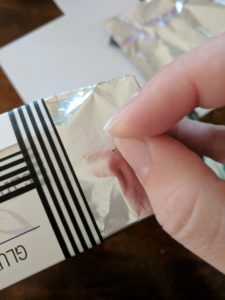We’ve been traveling home for the past two days, but I wanted to put up a quick post about our experience with my first image from totality….
Our experience was amazing, jaw dropping, and inspiring. We’re still processing the whole day. Occasionally, one of the kids will erupt with a “That was totally wicked!” and go back to quiet contemplation.
Our day began at 5am. The traffic going south into Casper, WY was minimal. And the Casper Event Center opened their gates early. The ease of getting in was a shock; we saw the southerly traffic reports.
We set up on a grassy expanse and had hours to set up. Our signs and cameras attracted the occasional passerby. Our shirts, were unexpectedly popular. We handed out Megamovie glasses. I happily showed our eclipse neighbors a zoomed in image of the Sun and pointed out its array of sunspots. Everyone was friendly, a community of onlookers waiting for their experience. Of those we talked with, no one had seen a total solar eclipse before. One woman said the closest she came was an annular and she was counting down the minutes to this experience. We all were.
As we neared totality, a band of clouds preceded the Moon’s shadow. I silently and loudly wished they would hurry along. They stayed through the end of the eclipse, but were gracious enough to part around the Sun and Moon conjunction to allow us a grand view of the Sun’s corona! As twilight descended upon us everyone cheered! The horizon, with a smattering of puffy clouds, was a breathtaking 360 degrees of iridescent pinks and oranges. We saw Venus through the clouds and I couldn’t resist shouting to everyone that it was there.
And then just as quickly as it came, the Moon’s shadow swept away from us on to it’s next location along the path of totality. Everyone cheered again. And I was overwhelmed. I wish it had lasted longer. I wish I had noticed more. But, it is an experience that will never leave me.
I’m already planning our next eclipse trip. Perhaps I will be able to convince my family to travel to Chile or Argentina for the 2019 total eclipse.
Look for more pictures and animations of the eclipse in the coming days. I have a lot of image processing to do!
Clear Skies
~Misty Carty, Ph.D.






























